Simulation and Analysis of Hydrodynamic Behavior in Different Nozzles and Its Corresponding Fluidized Beds
Abstract
1. Introduction
2. Model Construction
2.1. Gasification Process of Circulating Fluidized Beds
2.2. Slagging and Clogging of the Nozzle
2.3. Physical Model Construction
2.4. Physical Model Simplification and Mesh Division
3. Results and Discussion
3.1. Simulation of Hydrodynamic Behavior in a Single Nozzle
3.1.1. Simulation of Hydrodynamic Behavior in Nozzles with Different Opening Types
3.1.2. Simulation of Different Inlet Velocities with Combined Opening Type
3.1.3. Simulation of Different Outlet Pressures with Combined Opening Type
3.2. Simulation of Hydrodynamic Behavior in Gasifiers
3.2.1. Simulation of Hydrodynamic Behavior in Gasifiers with Different Opening Types
3.2.2. Simulation of Different Inlet Velocity in Combined Opening-Type Gasifier
3.2.3. Simulation of Different Outlet Pressures in Combined Opening Type of Gasifier
3.3. Hydrodynamic Behavior in a Circulating Fluidized Bed Gasifier
4. Conclusions
Author Contributions
Funding
Data Availability Statement
Conflicts of Interest
References
- Wang, C.; Luo, M.; Xiong, R.; Zhang, J.; Zhao, L.; Feng, P.; Che, D. Effect of CO2-water washing on Na/Ca removal performance of Zhundong high-alkali coal. J. China Coal Soc. 2023, 48, 996–1005. [Google Scholar]
- Meng, Q.S.; Wu, C.G. 320 t/h design and operation of a new circulating fluidized bed boiler for pure burning Zhundong coal. Energy Conserv. 2022, 41, 34–36. [Google Scholar]
- Yuan, Y. Characteristics of Tar and Combustible Gas Generation during Co Gasification of Zhundong Coal and Pine Sawdust in a Fluidized Bed Reactor; Qingdao University: Shangdao, China, 2023. [Google Scholar]
- Guo, D.; Zhou, C.C.; Ge, Z.W.; Yu, P.F.; H, Z.Y. Influence of alkali metals and alkaline earth metals on the utilization of Xinjiang Zhundong Coal. Cal Process. Compr. Util. 2023, 09, 60–66. [Google Scholar]
- Wang, F.C. Coal gasification technologies in China: Review and prospect. Clean Coal Technol. 2021, 27, 1–33. [Google Scholar]
- Cheng, Q.B. Development and prospect of coal background of “Carbon Gasification Peaking and Technology in China under the Carbon Neutrality”. Zhejiang Chem. Ind. 2023, 54, 38–44. [Google Scholar]
- Liu, X.M.; Zhang, M.J.; Zhang, T.; Yuan, T.L.; Li, H.Y.C.; Yang, K.; Wang, C.A.; Che, D.F. A review of coal-fired fluidized bed boiler coupled with carbon-containing waste combustion technology. Clean Coal Technol. 2024, 04, 1–15. [Google Scholar]
- Wang, C.; Song, G.L.; Lv, Q.G. Research progress on ultra-low NOx and SOx emission control technology for CFB boilers. Clean Coal Technol. 2021, 27, 17–25. [Google Scholar]
- Song, C.-Z.; Li, R.-Y.; Li, S.-X. Numerical simulation and reconstruction of air caps for 220t/h circulating fluidized bed. Energy Conserv. 2018, 37, 75–79. [Google Scholar]
- Hu, X.-B.; Yang, X.-Q.; Mo, W.-L.; Zhang, S.-P.; Ji, G.; Wei, X.-Y.; Fan, X. Structural characteristics and thermal conversion performance of ash and slag from circulating fluidized bed gasifier. J. Fuel Chem. Technol. 2022, 50, 1361–1371. [Google Scholar] [CrossRef]
- Shao, Z.M.; Yuan, S.M.; Guo, X.R.; Wang, F. Development and application research of circulating fluidized bed boiler technology. Power Syst. Eng. 2023, 39, 31–32. [Google Scholar]
- Çam, M.M.; Soyhan, H.S.; Qubeissi, M.A.; Al Qubeissi, M.; Çelik, C. Designing a new bell-type primary air nozzle for large-scale circulating fluidized bed boilers. Fuel 2023, 335, 127065. [Google Scholar] [CrossRef]
- Yao, H.T. Overview of fluidized bed boiler wind cap technology. Technol. Innov. Appl. 2016, 15, 135. [Google Scholar]
- Mirek, P. Designing of primary air nozzles for large-scale CFB boilers in a combined numerical-experimental approach. Chem. Eng. Process. Process Intensif. 2011, 50, 694–701. [Google Scholar] [CrossRef]
- Mirek, P.; Klajny, M. Air nozzle design criteria for protection against the backflow of solids in CFB boilers. Appl. Therm. Eng. 2018, 141, 503–515. [Google Scholar] [CrossRef]
- Dai, Z.-H.; Liu, H.-F.; Yu, G.-S.; Gong, X.; Yu, Z.-H. Numeric Simulation of the Flow Field in Four Opposed Impinging Jets. J. East China Univ. Sci. Technol. 2004, 01, 65–68. [Google Scholar]
- Wu, Y.; Zhang, J.; Yue, G.; Lu, J. Numerical simulation of the gas flow field from a triple channel coal-water slurry gasifier nozzle. J. Tsinghua Univ. Sci. Technol. 2006, 05, 691–695. [Google Scholar]
- Jiang, H.W.; Chen, H.K.; Gao, J.Q.; Wang, Y.; Wu, Z.X. Research on effects of primary air velocity on gas-solid fluidization characteristics of circulating fluidized beds based on pressure fluctuations in wind caps. Proc. CSEE 2014, 34, 2784–2793. [Google Scholar]
- Zhao, X.; Bao, S.L.; He, J. Experiments and numerical simulation on the resistance characteristics of the cap with inner tube and down flow. Boil. Technol. 2005, 36, 32–37. [Google Scholar]
- Fan, J.L. Study on Resistance Characteristics of Air Caps and Maldistribution of Distributor in Lame Fluidized Bed; University of Chinese Academy of Sciences: Huairou, China, 2016. [Google Scholar]
- Jiao, K.-P.; Mo, W.-L.; Zhao, Z.-T.; Li, J.-Q.; Yang, X.-Q.; Zhang, S.-P.; Wei, X.-Y.; Fan, X. Characteristics of the blockage from air nozzle guide duct in circulating the fluidized-bed coal gasifier and its formation mechanism. ACS Omega 2024, 9, 6924–6931. [Google Scholar] [CrossRef]
- Jiang, H.W. Research on Gas-Solid Fluidization Characteristics of Fluidized Beds Based on Pressure Fluctuations in Wind Caps; North China Electric Power University: Beijing, China, 2013. [Google Scholar]
- Huang, Z.; Zhang, S.G. Optimization of large-diameter bell-type air cap in CFB boiler. Electr. Power Constr. 2014, 35, 84–87. [Google Scholar]
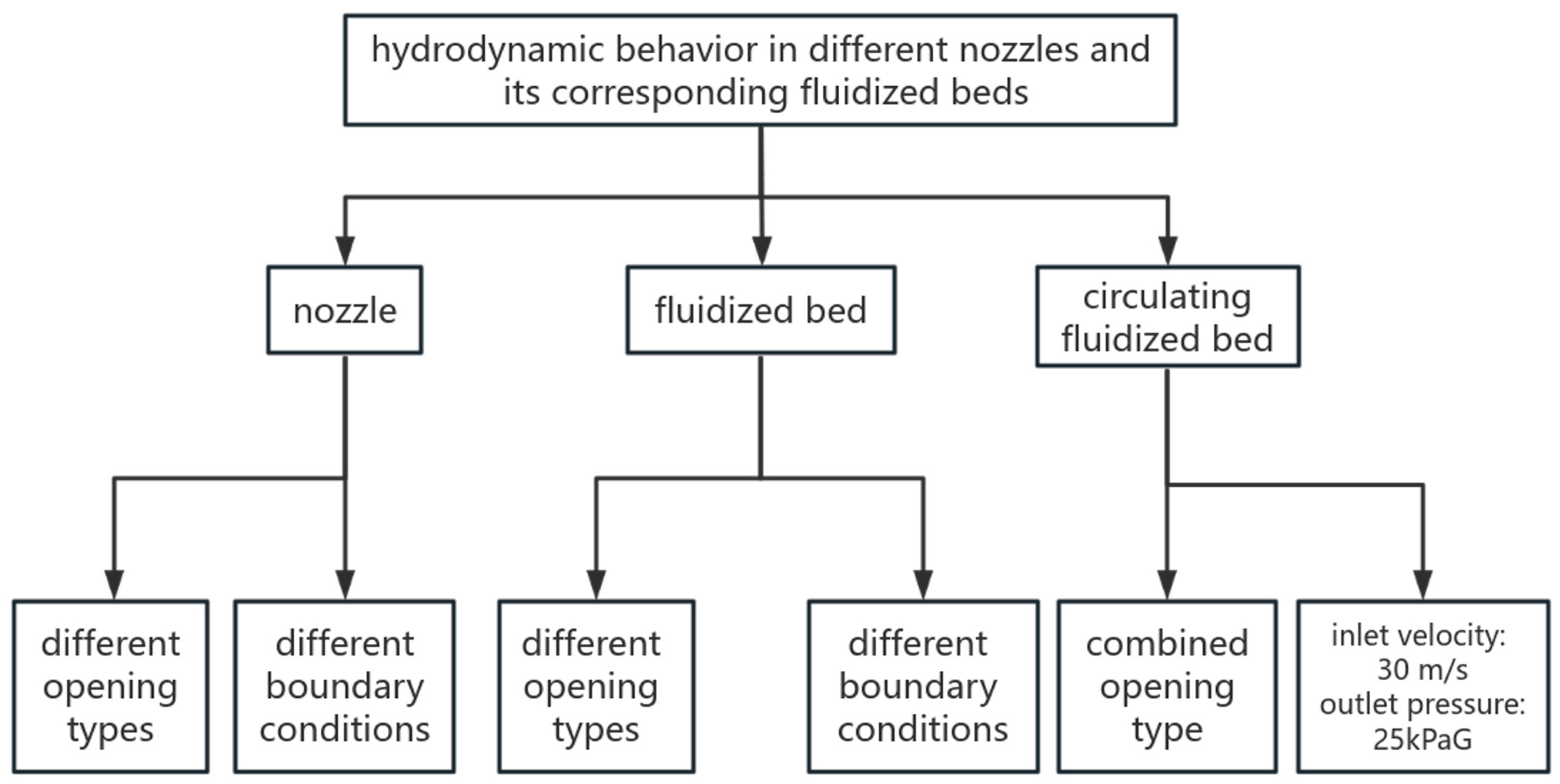
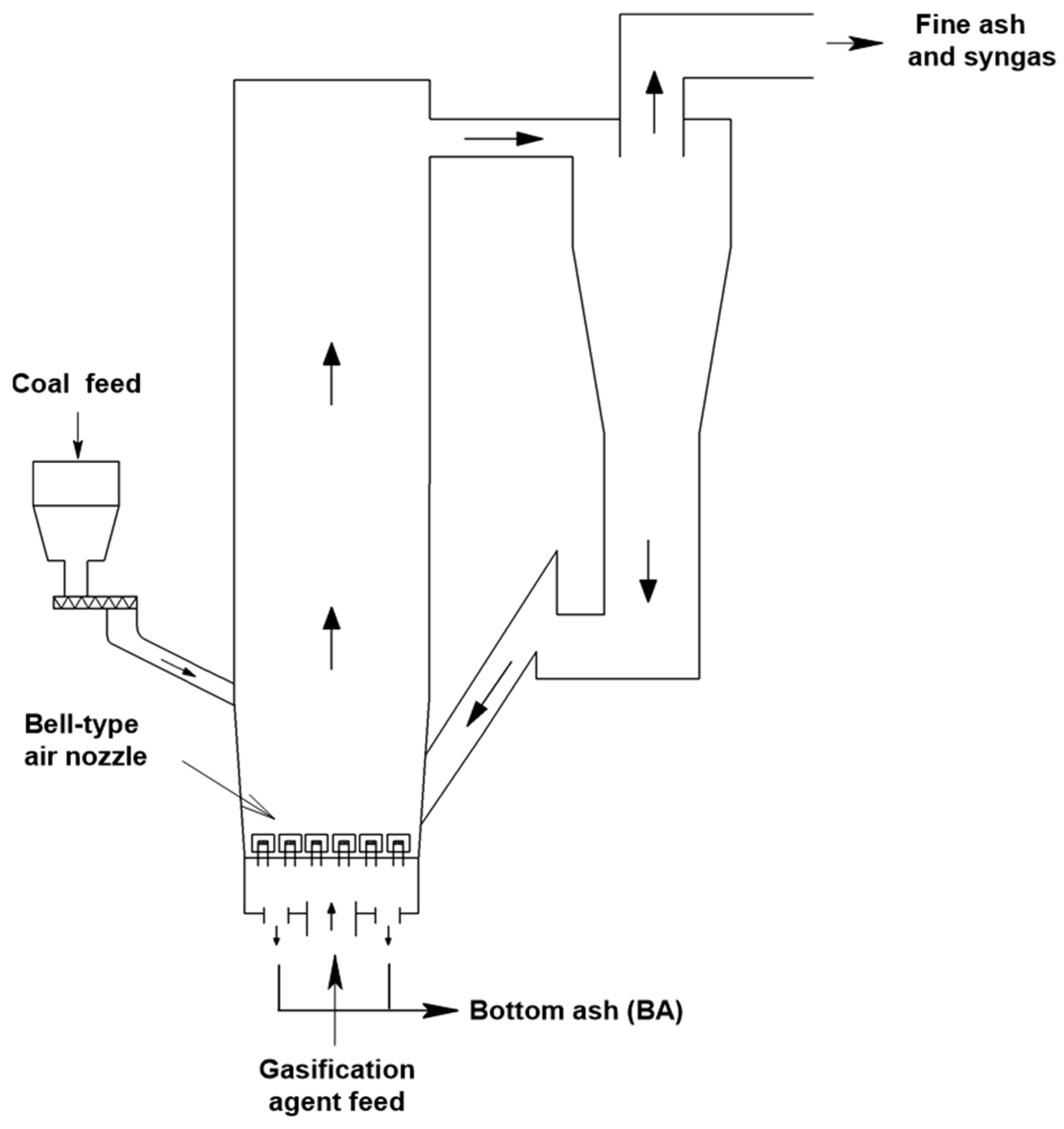

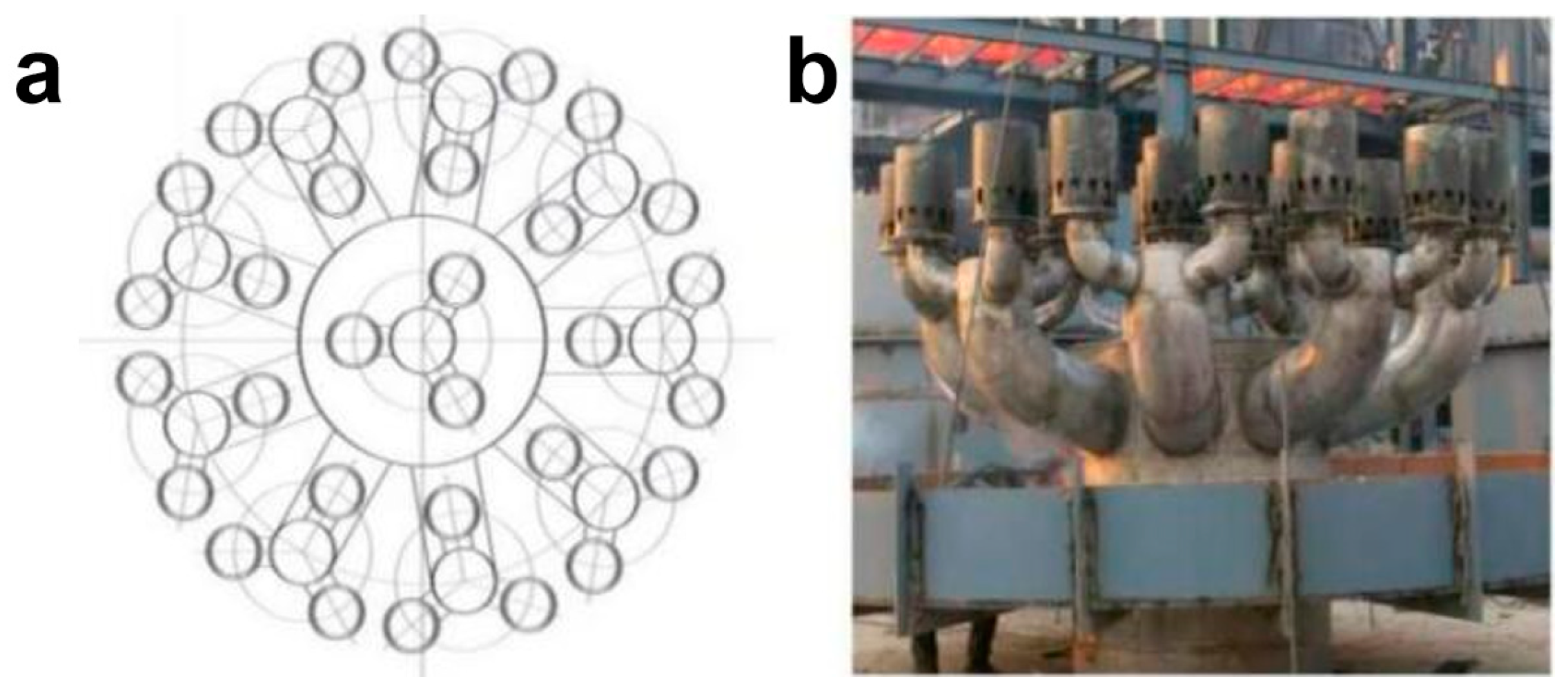


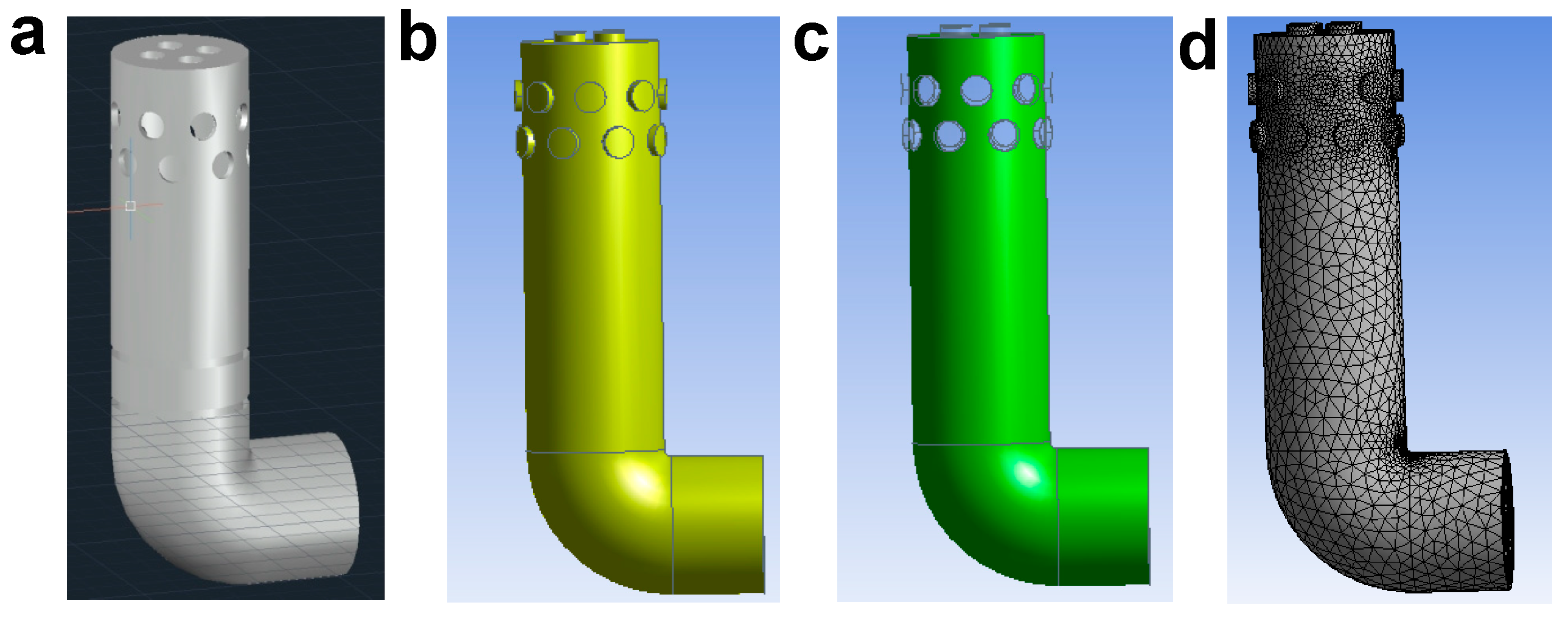

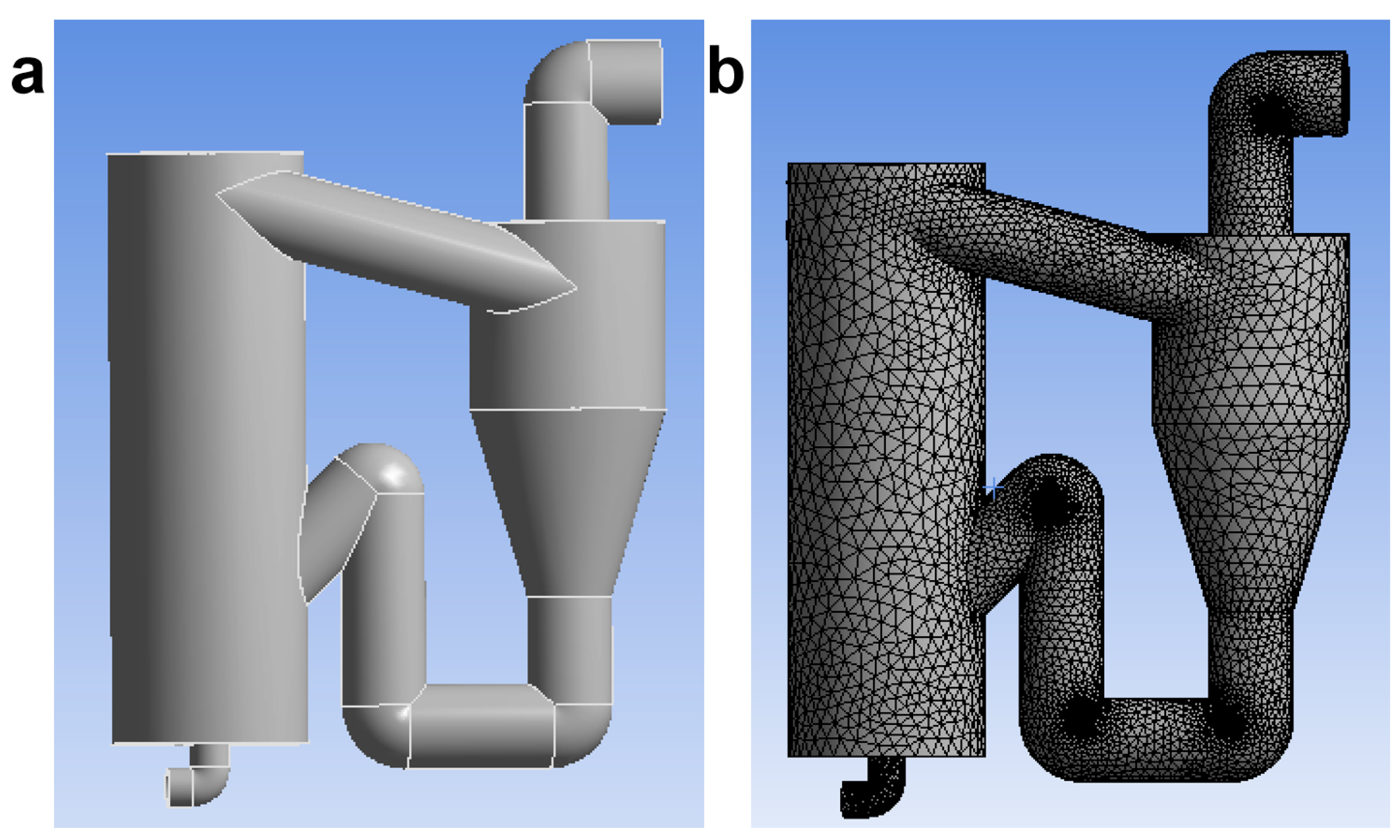




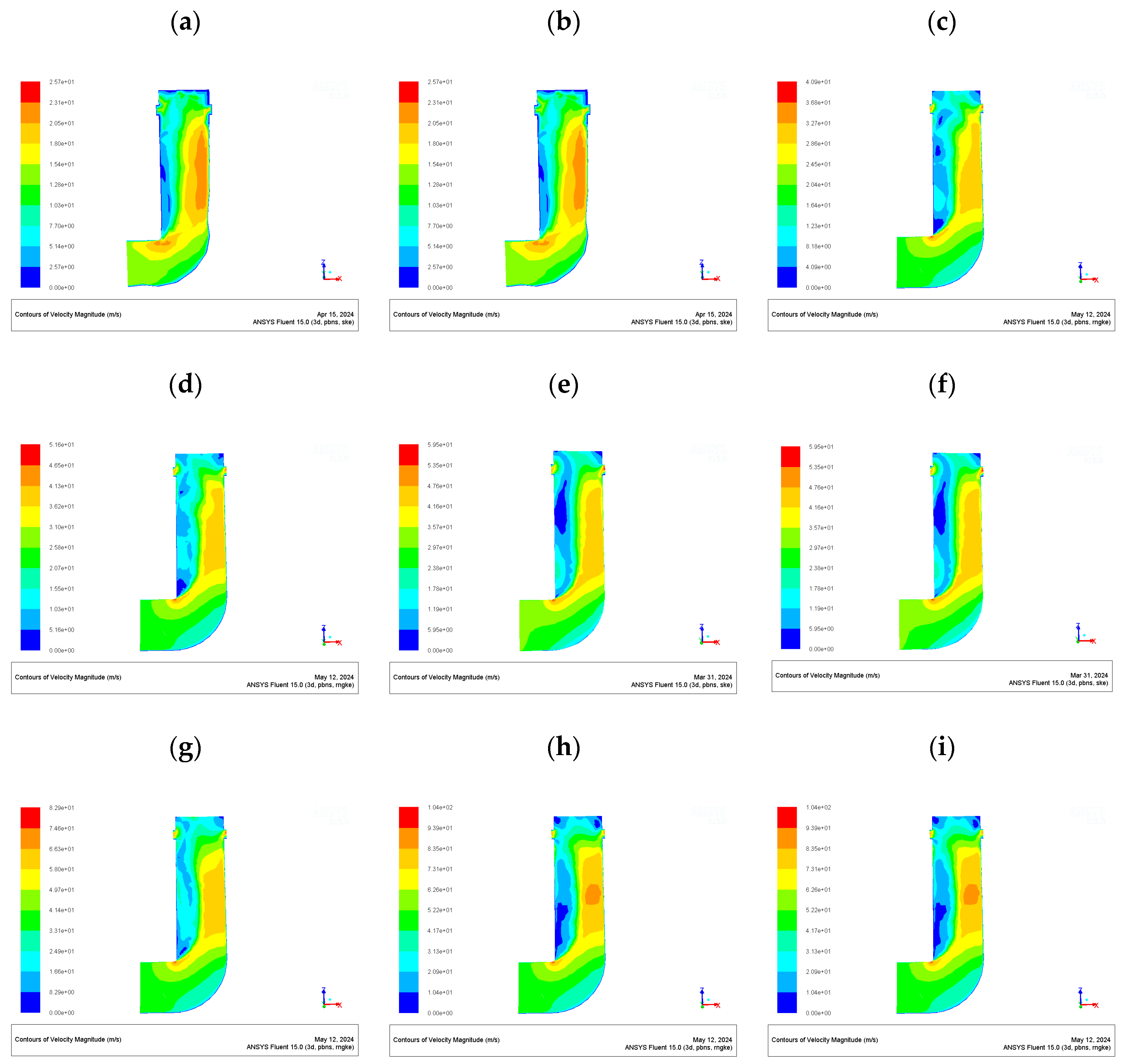
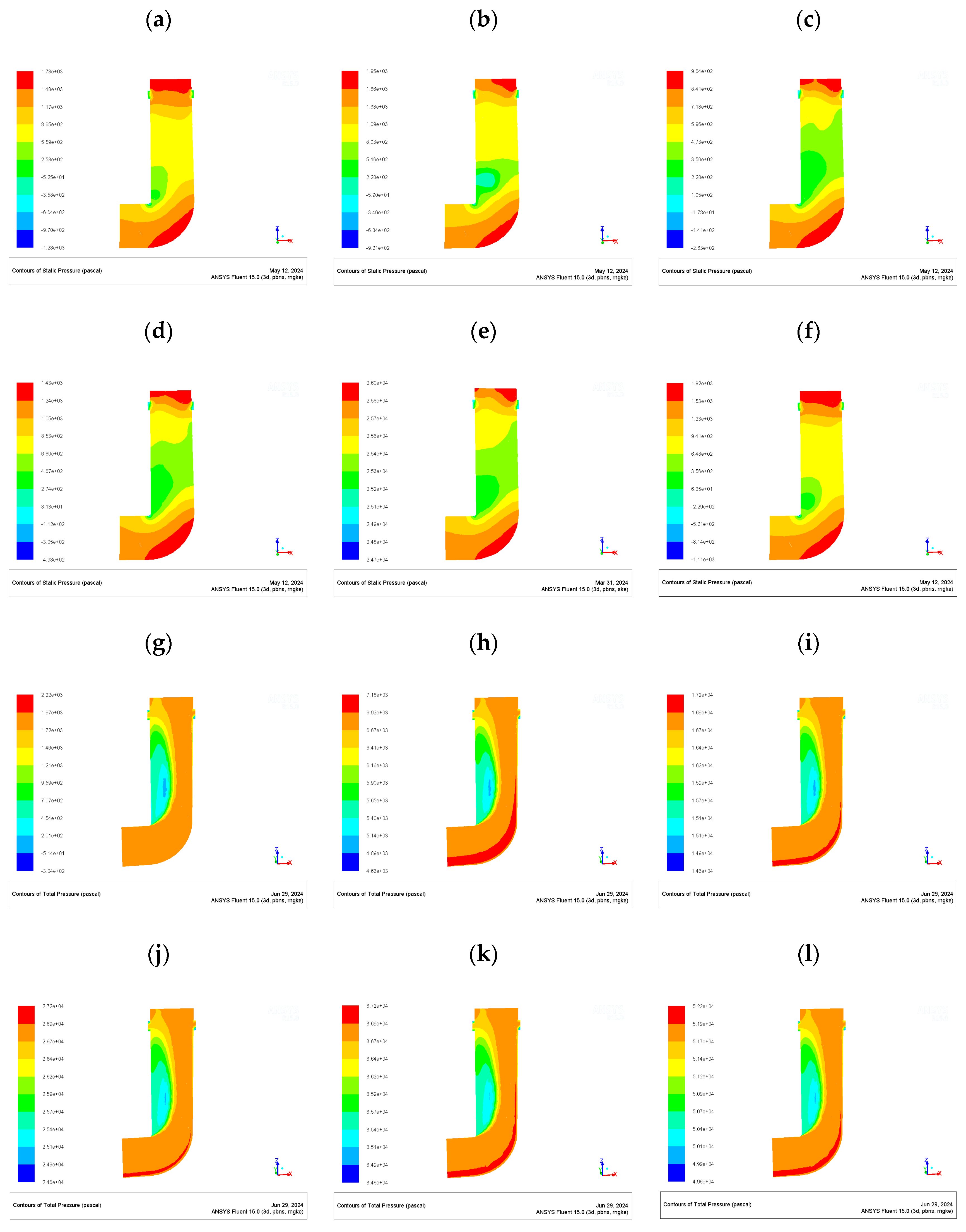
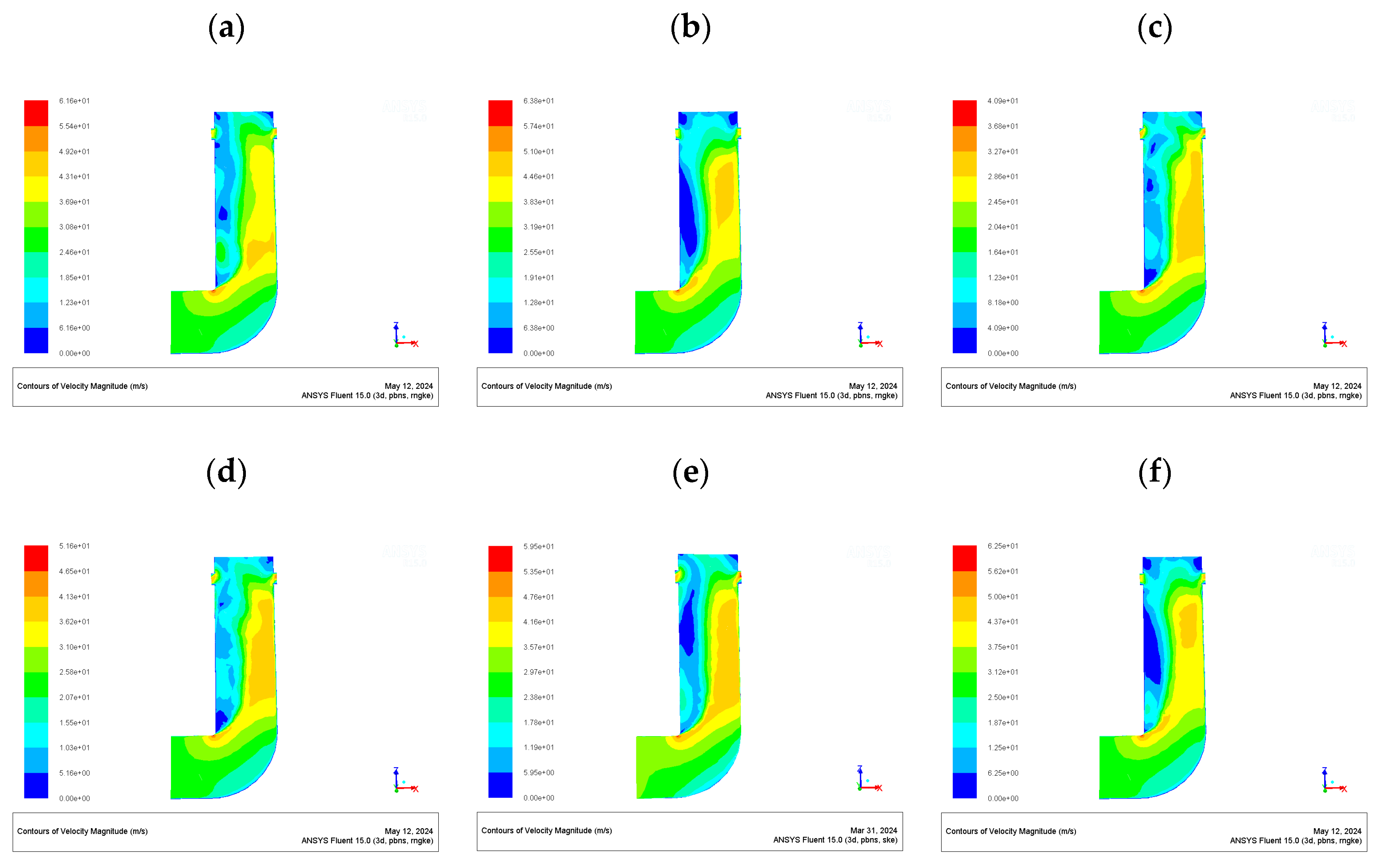
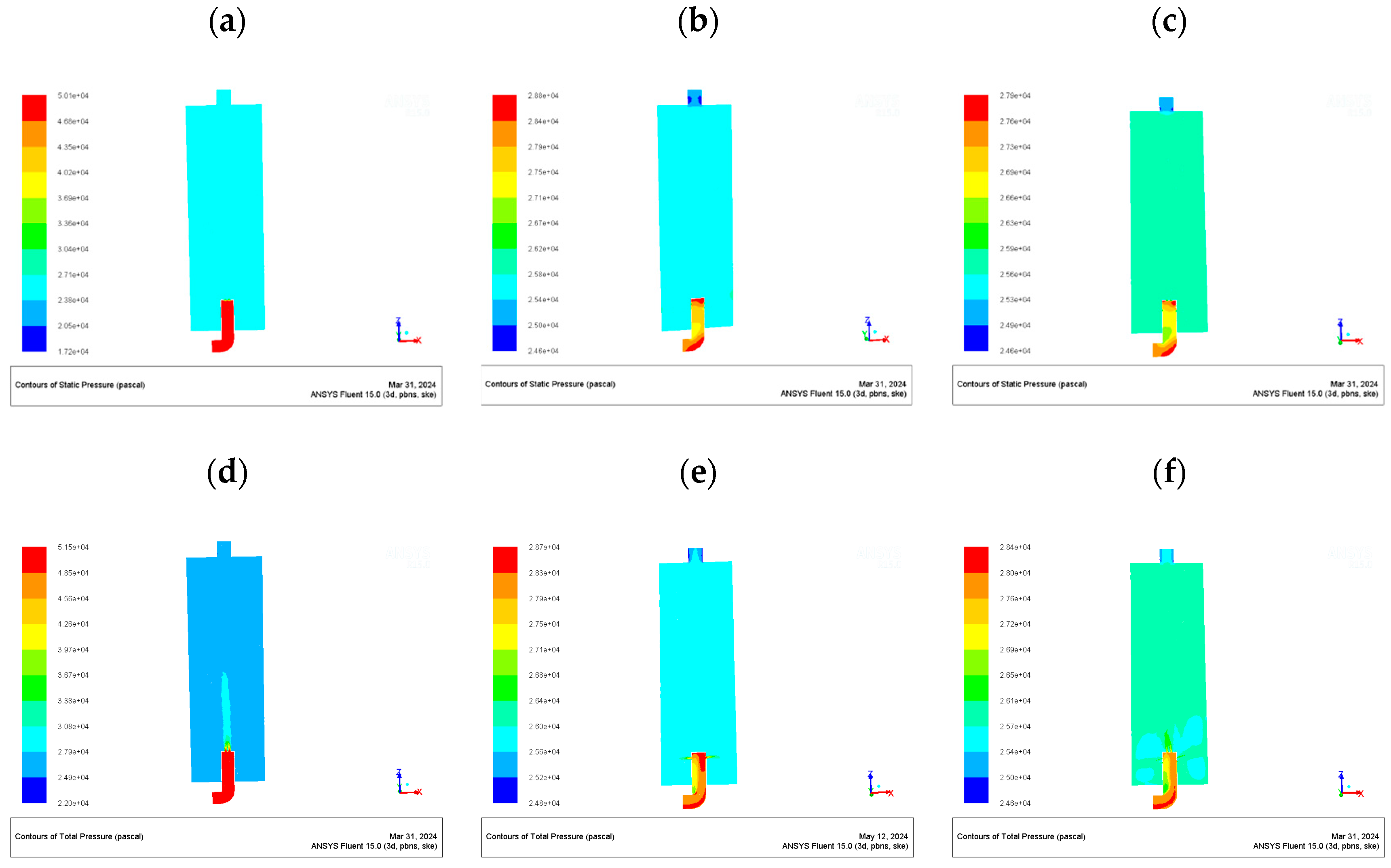

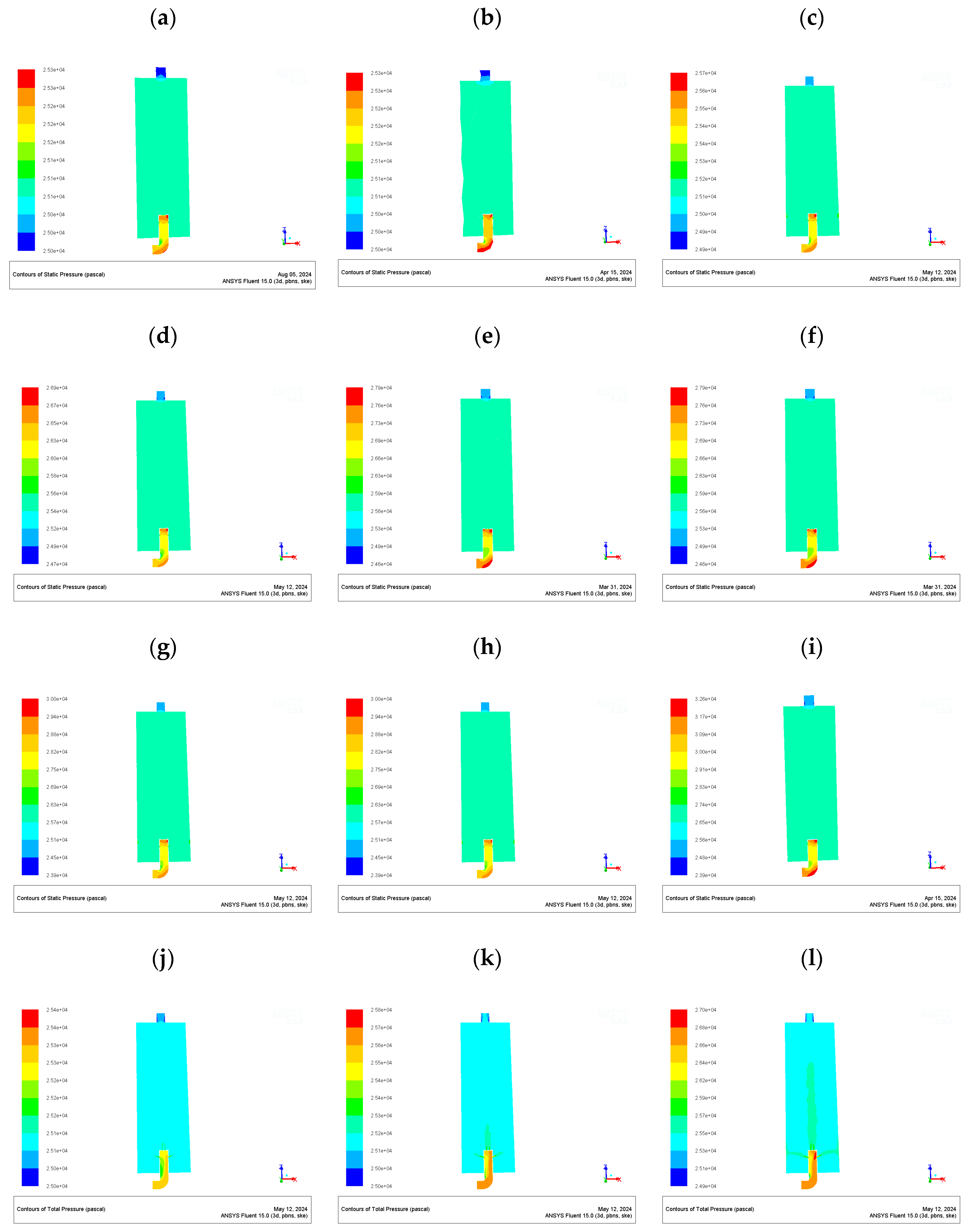

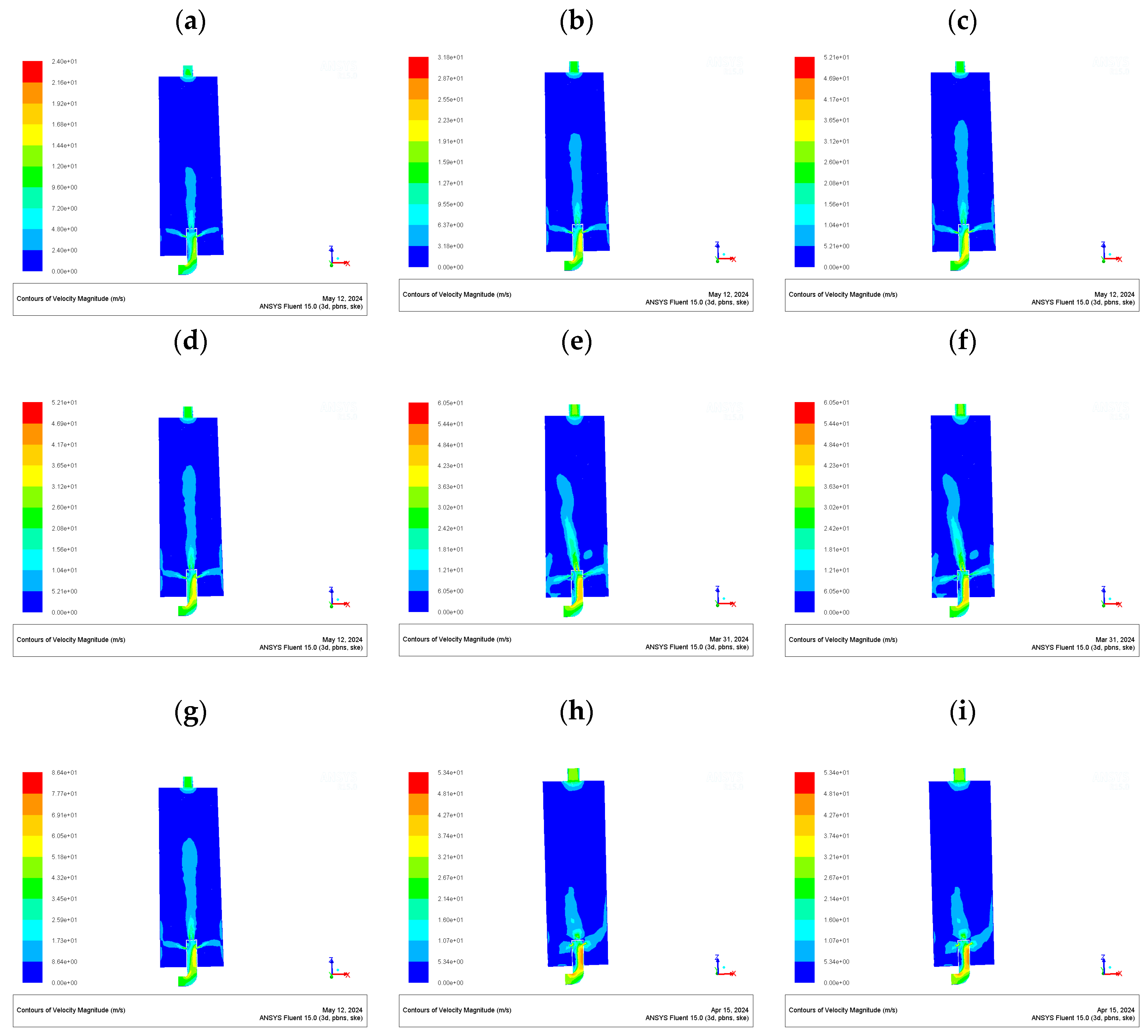
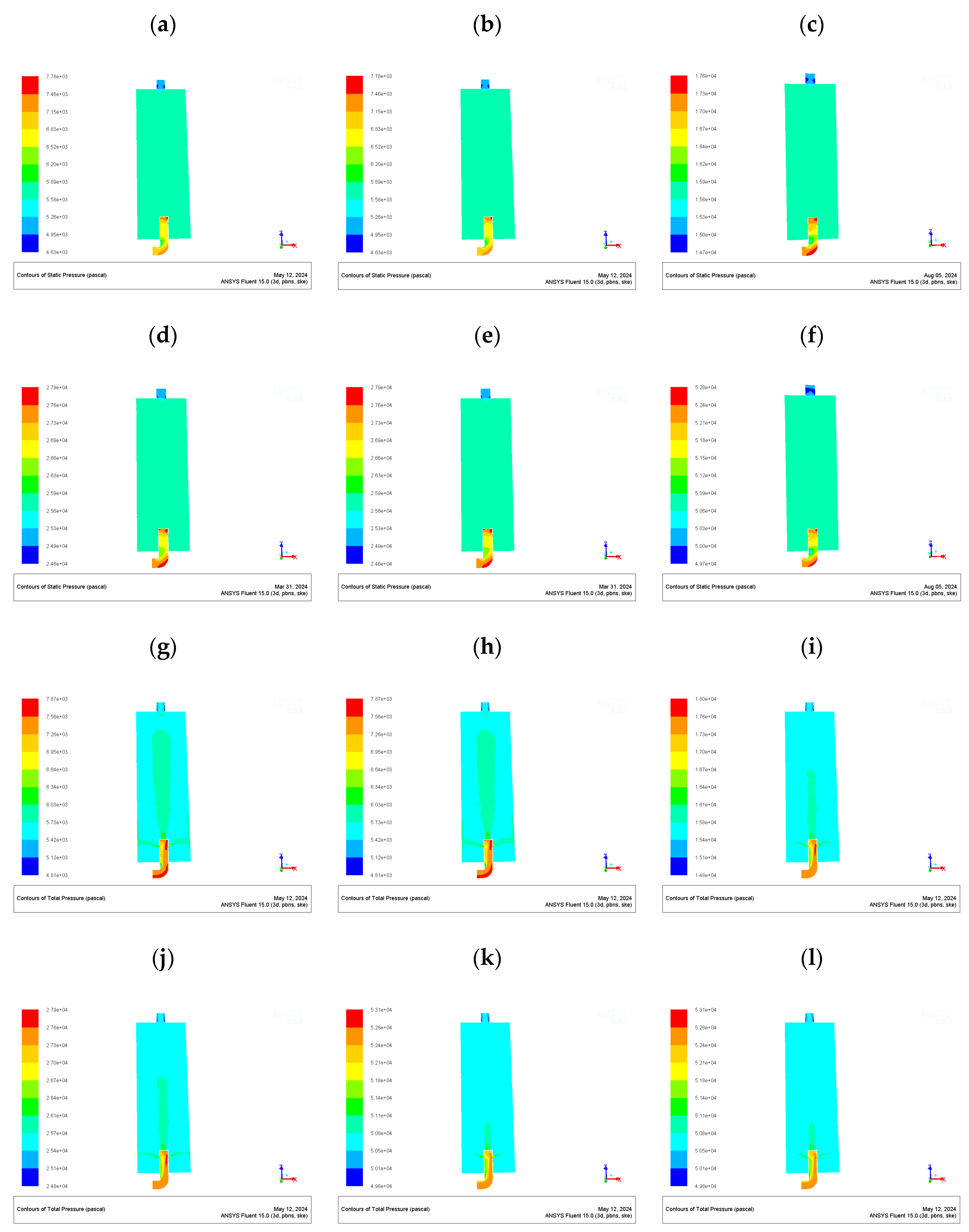

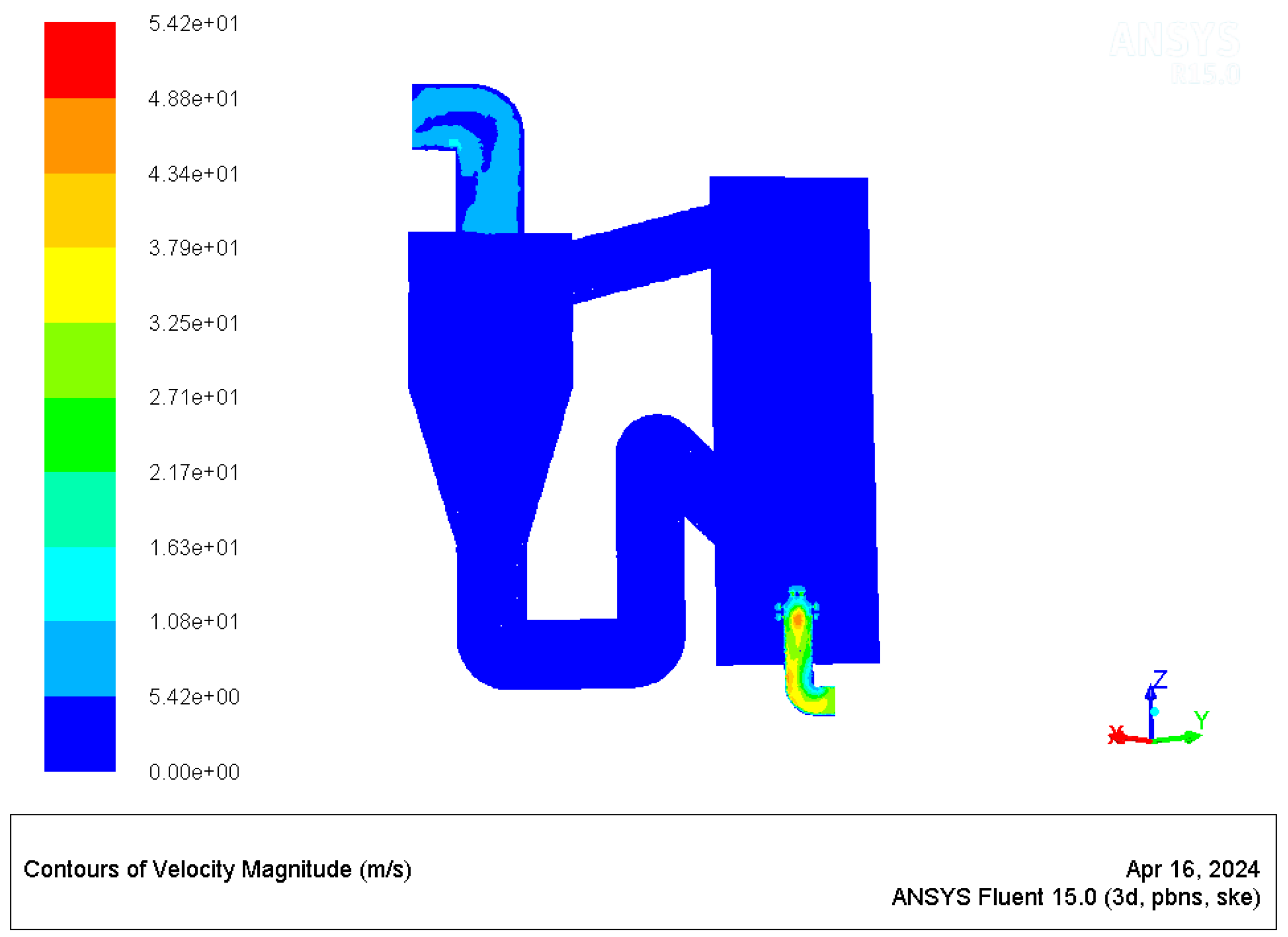
| Structural Dimension | Core Tube |
|---|---|
| Outer diameter (mm) | 168 |
| Wall thickness (mm) | 8 |
| Hole shape | Roundness |
| Number of holes (each) | Four on the top, eight on the side |
| Hole size (mm) | Diameter of 34 |
| View Length Unit | mm |
|---|---|
| Gravitational acceleration (m/s2) | “Z”−9.81 |
| Model | Viscous–laminar k-ε |
| Materials | Air |
| Wall | Stationary wall, no slip |
| Pressure–velocity coupling scheme | SIMPLEC |
| Initialization methods | Standard initialization |
Disclaimer/Publisher’s Note: The statements, opinions and data contained in all publications are solely those of the individual author(s) and contributor(s) and not of MDPI and/or the editor(s). MDPI and/or the editor(s) disclaim responsibility for any injury to people or property resulting from any ideas, methods, instructions or products referred to in the content. |
© 2024 by the authors. Licensee MDPI, Basel, Switzerland. This article is an open access article distributed under the terms and conditions of the Creative Commons Attribution (CC BY) license (https://creativecommons.org/licenses/by/4.0/).
Share and Cite
Tian, M.; Li, J.; Mo, W.; Jiao, K.; Peng, W.; Yang, X.; Zhang, S. Simulation and Analysis of Hydrodynamic Behavior in Different Nozzles and Its Corresponding Fluidized Beds. Processes 2024, 12, 1656. https://doi.org/10.3390/pr12081656
Tian M, Li J, Mo W, Jiao K, Peng W, Yang X, Zhang S. Simulation and Analysis of Hydrodynamic Behavior in Different Nozzles and Its Corresponding Fluidized Beds. Processes. 2024; 12(8):1656. https://doi.org/10.3390/pr12081656
Chicago/Turabian StyleTian, Minghang, Junqiang Li, Wenlong Mo, Kunpeng Jiao, Wei Peng, Xiaoqin Yang, and Shupei Zhang. 2024. "Simulation and Analysis of Hydrodynamic Behavior in Different Nozzles and Its Corresponding Fluidized Beds" Processes 12, no. 8: 1656. https://doi.org/10.3390/pr12081656
APA StyleTian, M., Li, J., Mo, W., Jiao, K., Peng, W., Yang, X., & Zhang, S. (2024). Simulation and Analysis of Hydrodynamic Behavior in Different Nozzles and Its Corresponding Fluidized Beds. Processes, 12(8), 1656. https://doi.org/10.3390/pr12081656






